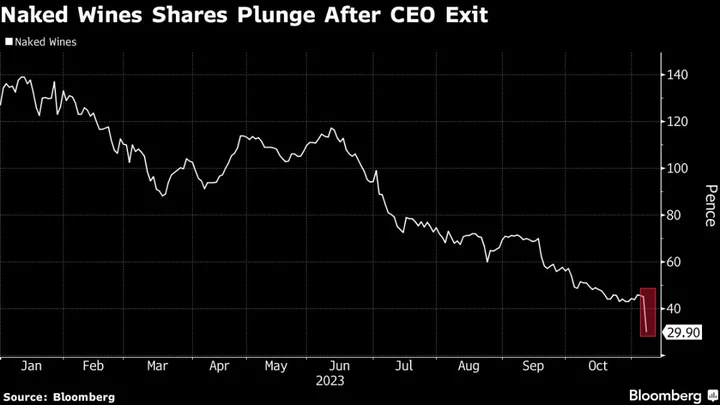
Naked Wines CEO Departs as Drinks Merchant Lowers Outlook
Online wine merchant Naked Wines Plc lowered its full-year revenue and profit guidance on weak trading in the
2023-11-07 18:48
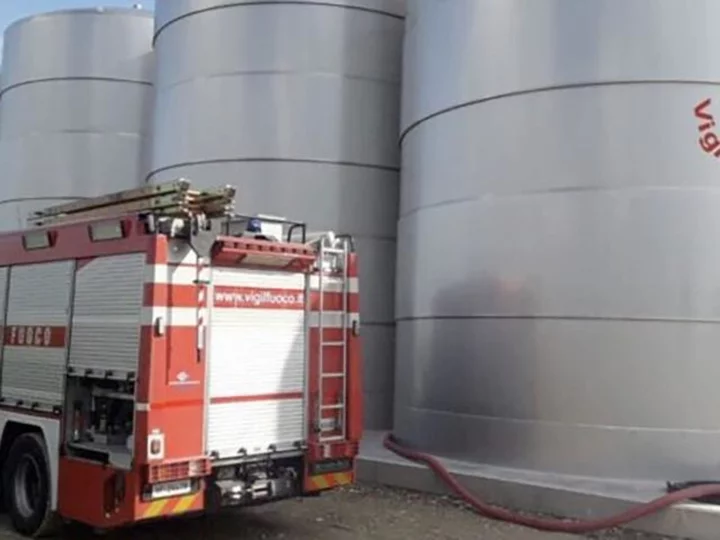
Winemaker dies in Italy while trying to save colleague who fainted in wine vat
A winemaker in Italy has died while trying to save his colleague who had passed out in wine vat, according to Italy's fire brigade.
2023-09-16 02:56
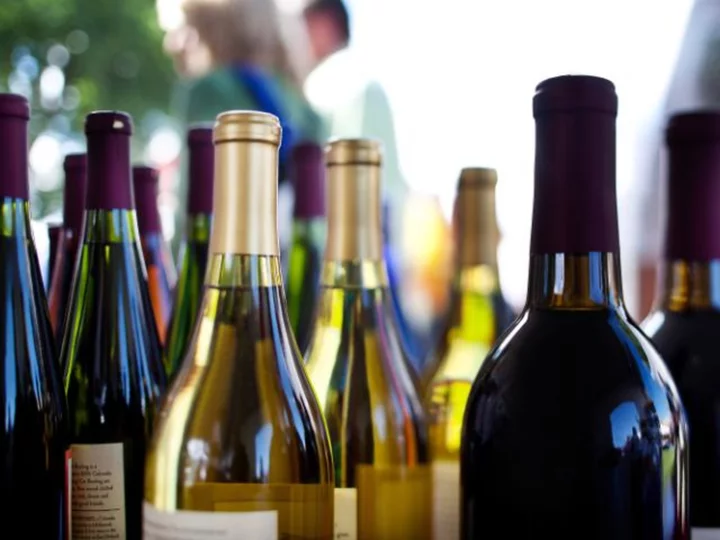
France and EU to spend 215 million euros shoring up struggling wine producers
The French government and the European Union will spend 200 million euros ($215 million) to help the country's wine producers, who are struggling to cope with falling prices and waning demand.
2023-08-26 19:48
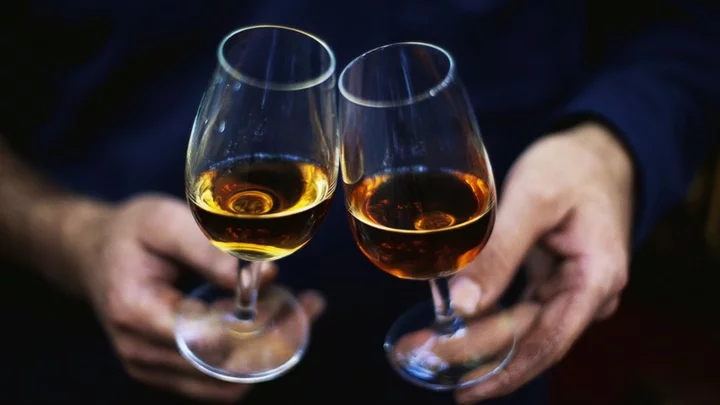
France to spend €200m destroying wine as demand falls
A cocktail of problems hit the industry, including demand for wine falling as more people drink craft beer.
2023-08-26 07:26
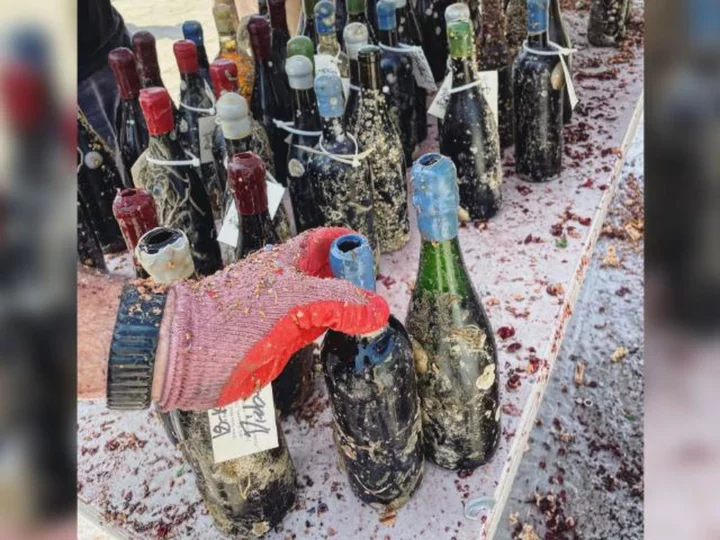
California authorities destroy 2,000 bottles of wine illegally fermented under the ocean
Agencies in Santa Barbara, California, destroyed 2,000 bottles of wine that were sold by Ocean Fathoms, the office of the city's district attorney announced last week. Starting in 2017, the company was sinking crates full of bottles without a proper permit in hand from the California Coastal Commission and US Army Corps of Engineers.
2023-08-19 06:45

NBA star James Harden sells out 10,000 bottles of wine in seconds on Chinese livestream
NBA star James Harden expressed disbelief after Chinese fans snapped up 10,000 bottles of his own-branded wine in seconds, demonstrating the massive reach of livestreaming in the country, where basketball is loved by millions.
2023-08-17 13:27
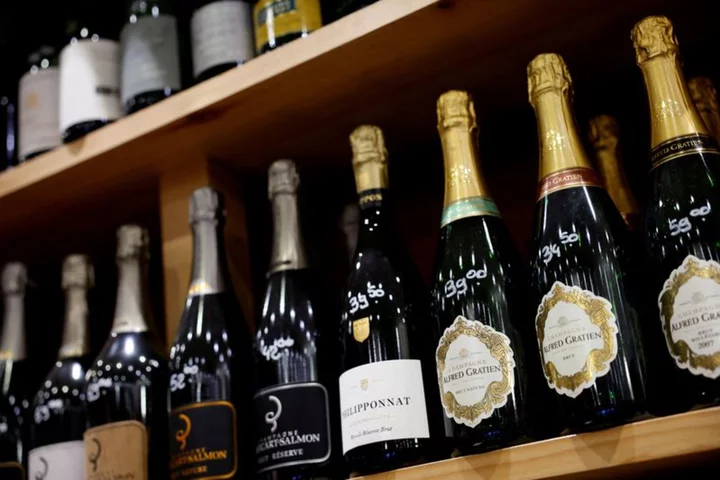
Mixed year for French wine but champagne fizzes
PARIS French wine production in 2023 is expected to be near the average of the last five years,
2023-08-08 17:57
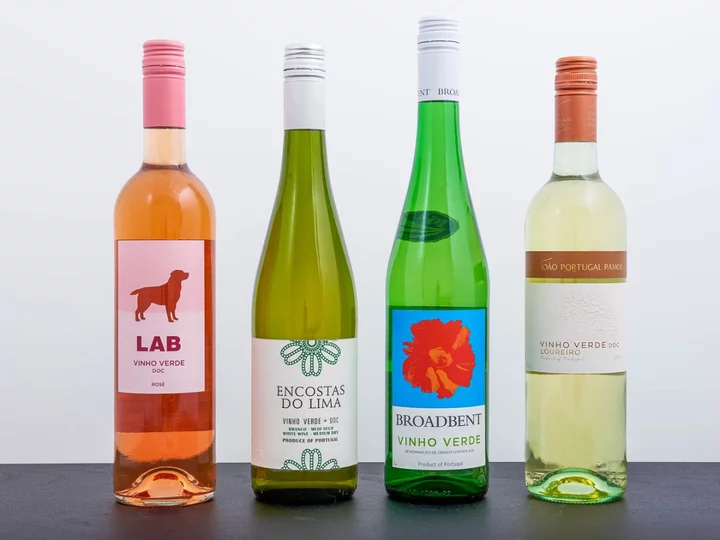
What to know about vinho verde, Portugal’s effervescent bargain wine
To beat summer heat, wine lovers often turn to vinho verde, a light, refreshing wine from northern Portugal that has enjoyed a boomlet the past few years. One sign of its popularity – several local wineries are producing their own “verde-style” wines with the hallmarks of sharp acidity and slight carbonation. But what exactly is this “green wine”? Here are five things to know about this popular summer sip. 1. The name There’s no agreed on explanation for the name, which apparently evolved around the 17th century when the wines were first exported to Britain. It could be a reference to the “green” underripe flavours of tart apples and lime blossom in the very fresh, raw wine. It could also refer to the lush green landscape of the Minho region in northwestern Portugal, where the Atlantic Ocean’s maritime influence produces a climate and terroir starkly different from the parched Mediterranean lands in the Algarve to the south. The Portuguese pronunciation is VEEN-yo VER-da, with the last syllable all but swallowed. If, like most people, you pronounce it VEE-no VERD-ee, the Portuguese winemakers will not complain. They will smile politely, pocket your cash and be happy you are enjoying their wine. Green wine comes in white, pink and red (sorry, I couldn’t resist). Very little red is produced. Both the whites and rosés are notable for tart acidity (those green flavours) and a slight spritz of carbonation, which combine to make them refreshing, especially in hot weather. They are intended to be enjoyed, not aged. In fact, many are not even vintage-dated because they’re not expected to last long enough for the year to be relevant. So drink up! 2. The region and the grapes Vinho verde is Portugal’s largest demarcated wine region, or appellation (though the administrative region is called Minho). There are nine subzones which generally do not appear on wine labels but may become increasingly important as winemakers explore different expressions of vinho verde. The main grapes are alvarinho (familiar to us as albariño) and loureiro, a crisp white often compared to riesling. There are several other varieties that are even harder to pronounce and noteworthy only if you are keeping track of varieties you’ve tasted. Alvarinho dominates the blends in the north (where the Minho borders Spain’s Rias Baixas region), and loureiro is more prominent further south. 3. That spritz Vinho verde has been exported at least since the 17th century. Back in the day, the wine’s signature spritz resulted from a little bit of sugar remaining as the wines were rushed into bottle before fermentation had finished. Today, the bubbles are added artificially by carbonation before bottling. The level of carbonation is up to the producer – some vinho verde can be quite fizzy, while others gently tickle the palate. 4. You can use it in cocktails Vinho verde’s fizz and still relatively low price make it an ideal foil for your summer mixology efforts. An ice cube, slice of lime and a splash of gin make a nice spritzer. It can also be a great base for sangria. 5. New styles are evolving While we think of vinho verde as a simple, enjoyable starter wine for a summer repast, some winemakers are producing more serious versions. These are usually made from a single variety (such as alvarinho or loureiro) and labelled with the vintage. Some producers are bottling single-vineyard wines to highlight a site’s granite or schist soils. “The wines are changing and moving forward with an international, incredibly bright and pure style,” says Eugénio Jardim, the brand ambassador for Wines of Portugal. He cited Anselmo Mendes and Quinta da Soalheiro as pioneers of this new style. “This is a region in flux, with the quality of wines soaring in recent years,” Jardim tells me. “This is not a one-note region.” © The Washington Post Read More Sierra Nevada lakes change more in past 100 years than three millennia How the climate crisis played a role in fueling Hurricane Ida Against the odds: The fight to save sea turtles in Ras Baridi The Norwegian sparkling wine aged at the bottom of the sea The curious history of sauvignon blanc – and what to drink if you hate it The Independent Wine Club best cases 2023: Wine from small growers
2023-07-14 19:22
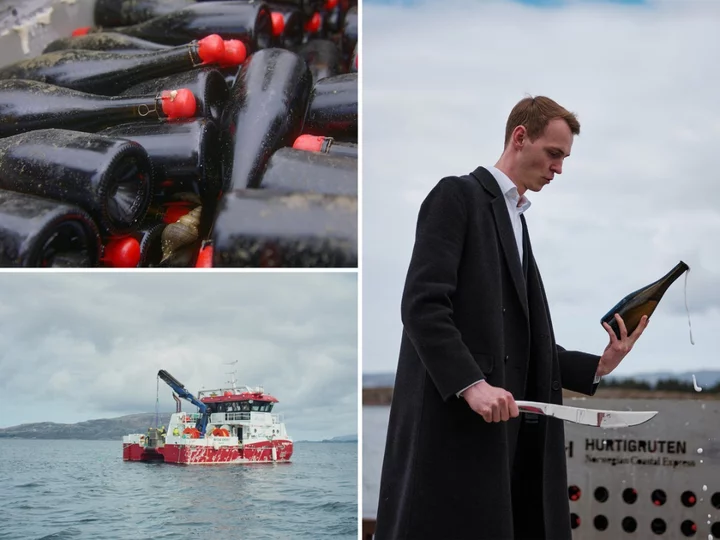
Drops in the ocean: The Norwegian sparkling wine aged at the bottom of the sea
The moment the first crates of English sparkling wine were pulled up from the depths of the Arctic Ocean off the coast of Sandnessjøen, Tani Gurra, the director of beverages for Norway’s Hurtigruten Coastal Express, shed a tear. Or so I’m told – I’m currently watching the raising of the third crate of wine from a boat alongside other members of the press. Prior to this bright but teeth-chatteringly cold day, all 1,700 bottles had been sitting 30 metres below the surface of the Arctic Ocean for six months, the first time any wine has been aged in these waters. It’s an exciting day for the Hurtigruten team and Rathfinny Wine Estate, the Sussex winery where the bottles have been sourced. Husband and wife team Mark and Sarah Driver are here, watching the dark bottles of their 2018 classic cuvee emerge from black Nordic waters. Everyone is anxious to see if they have survived their time under immense (43.5psi) pressure. To our relief, every bottle and wax-sealed cork ascend intact. Love wine but don’t know where to start? The Independent Wine Club features curated cases from small growers and expert advice on how to enjoy wine. Sign up now for free. Around 24 hours before this jubilant moment, I found myself on a Hurtigruten ship, sailing from the Lofoten archipelago to Tromsø. With it being late spring, we were quickly approaching midnight sun territory; at 12am, we were invited onto the deck to view the majestic Trollfjord. But instead of the pitch black of midnight, we were surrounded by the distinct blueness of twilight. The remaining snowcaps on the fjord almost glowed in the dark. Even though it’s been around for 130 years, Hurtigruten struggles to define itself – it’s not a ferry, despite ferrying thousands of Norwegians from town to town along the coast, nor is it a cruise, despite giving tourists who spend days fjord-watching a rather luxurious experience. Several times throughout the trip, people would ask: “So is it a cruise or a ferry?” And each time, the answer was something along the lines of: “It’s sort of both, and neither.” The ships have immense charm, despite their neither-here-nor-there status. The number of passengers each one can take varies, but the MS Nordkapp, on which I am sailing, boasts capacity for up to 590 passengers, around 480 of which can book cabins if they want to join 12-day voyages that will take them to numerous ports along the way. They are nowhere near as large as the behemoth cruiseliners that groan with the weight of on-board casinos, theme parks, ballrooms and spas, burping and farting tons of chemicals into the ocean. Hurtigruten’s fleet is tiny in comparison and each vessel has a limited number of facilities: two small hot tubs in lieu of a spa, a gym, a cafe with a bakery and an ice cream bar, a fine dining restaurant, and a bar with panoramic views of the outside world. From June, the ships will offer passengers hankering after a glass of bubbly a taste of their sea-sunken sparkling. The collaboration between Hurtigruten and Rathfinny is part of its 130th anniversary celebrations, but the goal is to make the wine their house sparkling. The classic cuvee is the estate’s “house-style” Sussex sparkling and gained critical acclaim almost immediately after it hit the market. The Independent named it the best classic cuvee in 2022 and described it as “exemplary English winemaking”, noting “precise flavours of citrus and apricots and hints of cream”. But sinking the bottles is something Rathfinny has never tried before, until now. It was Gurra’s idea. He and Andre Petterson, vice president of hotel operations at Hurtigruten, decided to give the method a shot after seeing news that a group of divers found 168 bottles of French champagne on an underwater shipwreck in 2010. The bottles, discovered in the Baltic Sea, were 170 years old and had spent decades in what could have been a watery grave – but instead turned out to be the perfect temperature-controlled cellar for ageing wine. “I started thinking and talking about it, and thought, ‘Why not? Why can’t we do something like this? The Arctic Sea is a part of us, and we already source food from all along the coast of Norway,” Gurra tells me. “For us, the fjords are fish stocks, the mountains are our vegetable and herb gardens. Why not the sea for wine?” But Norway is better known for its spirits, not its wine. They cast their eyes towards England, from which a significant portion of their passengers hail, and landed on Rathfinny. It is rather poetic that the Rathfinny Wine Estate has on its label the Seven Sisters – the iconic chalk sea cliffs that make the Sussex coastline so recognisable. The location where they’ve chosen to age their wines has its own Seven Sisters: a mountain range on the island of Alsten in Alstahaug Municipality. Mark and Sarah are buzzing to show off their label and the unexpected connection with Norway during the uncorking of their wines. Mark says: “We are really proud to showcase Sussex in Norway. English wines have been making a name for themselves and it really is something special for us to be on Hurtigruten ships, especially as they are really popular with English tourists.” I had the chance to taste the Rathfinny classic cuvee before and after the undersea ageing process. The before-wine was a lovely, dry sparkling; my notes read “sharp bubbles, fruity”. It’s easy to see why it’s a firm favourite among wine-lovers, considering its versatility and ease of drinking. How could six months underwater possibly change it, I wondered? During the uncorking, I am pleasantly surprised. The time the wine has spent in the sea has made it somehow rounder, gentler on the tongue. Gurra describes it as having a more “feminine touch” and being “softer, smoother” to drink. Nikolai Haram Svorte, who was crowned Norway’s best sommelier this year, was invited to be the first to try the wine and give his verdict. Against a steely grey sky, he sabered the first bottle and tasted a glass, declaring it “the start of something truly exciting”. He added: “The wine has retained more freshness than I anticipated. From the refreshing citrus tones to a mineral salty finish, like an oyster, it’s clear to me that this hugely intriguing experiment has revealed a unique setting to store and age sparkling wine.” My own feeling is that the newly aged bubbles will be a big hit among passengers of Hurtigruten. The softer mouthfeel makes it even easier to drink, and I can envision clinking glasses while watching Norway’s majestic landscape float past. Read More The curious history of sauvignon blanc – and what to drink if you hate it The Independent Wine Club best cases 2023: Wine from small growers Win a mixed wine case, perfect for pairing with food The Independent Wine Club best cases 2023: Wine from small growers Win a mixed wine case, perfect for pairing with food Uncorked: How do I keep my wine cool at a picnic?
2023-07-08 19:21
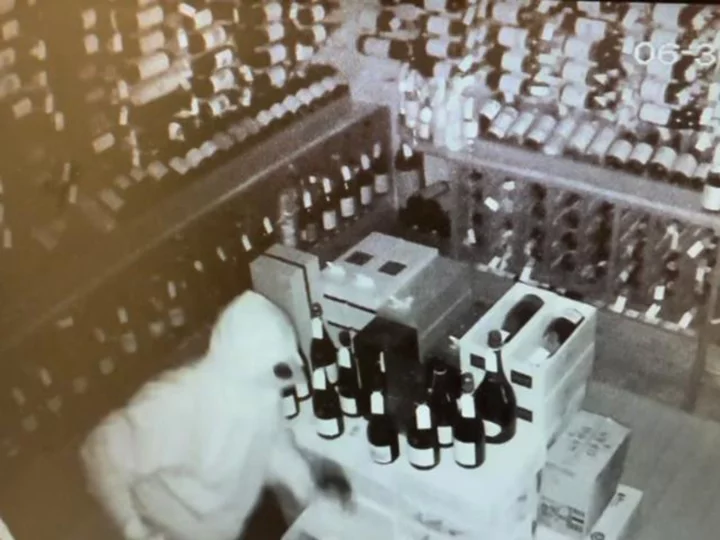
Thief breaks into California wine shop through its roof and steals rare, expensive bottles, store says
Police in Southern California are investigating a theft at a high-end wine shop where, according to the store, a burglar drilled a hole into its roof, descended via rope and stole around 600 bottles of wine and liquor worth over $500,000.
2023-07-06 12:59
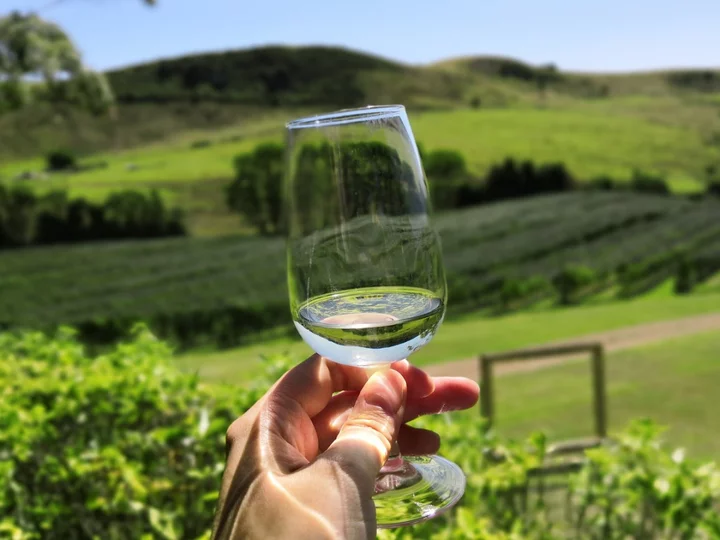
The curious history of sauvignon blanc – and what to drink if you hate it
Growing up in the early 2000s-2010s meant the rite of passage into alcohol inevitably involved terrible choices, from alcopops (RIP) to grim beers (Coors) and nasty wine. Mostly white, rarely red, while rosé that both looked and tasted like Ribena was a world away from the delicate pale provencal style we’re so au fait with now. Then as now, the cheaper the better. Location, grape variety, acidity levels – it all meant absolutely nothing. Hell, taste didn’t matter either. Slurp it fast enough and you’d barely notice a slight whiff of paintstripper on the nose or a lingering hint of vinegar on the palate. It was just your (well below) average plonk. The number one important factor was price – swiftly followed by ABV, of course. The rough budget for a bottle was the mighty sum of £3-4. A tenner was a good night out. Remember those days? It was around this time that sauvignon blanc began its world domination. It was the IT wine to buy. Rocking up to your friend’s house with a bottle in tow made you look like you knew something about wine, maybe even had great taste (despite still buying the cheapest bottle possible, of course). It was even better if it was from New Zealand – top points if it came from Marlborough, the top of the South Island, where about 70 per cent of the country’s wine is produced. Love wine but don’t know where to start? The Independent Wine Club features curated cases from small growers and expert advice on how to enjoy wine. Sign up now for free. While Gen Z seem to have broken free of British booze culture altogether, when I was at university, rosé was the go-to pre-drink before a night on the tiles. And lots of it. It’s been off the table ever since. The mere smell of it takes me right back to those heady, alcohol-drenched days. Perhaps it’s just a case of unfortunate timing for my age group – victims of the wine’s popularity surging at the height of early-Noughties boozing culture. But why did sauvignon blanc become so popular 15 years ago? ​​Emily Harmen, wine consultant at Firmdale Hotels and Vina Lupa, says it’s “simply because when people get into wine, they usually like wines that are quite fruity”. Sauvignon blanc offers these fruity notes, as well as freshness. It’s famed for its notes of crisp asparagus, green pepper and often a grassy or herbaceous flavour too. High acidity makes it very dry. The New Zealand sauvignon blanc vines were planted in the Seventies, and its arrival on the British scene a few decades later served as a pointed change in taste from the overly oaked Chardonnays and sickly syrupy rieslings (the latter is now cool again; more drinkable and less sweet) that were popular at the time. Sam Tendall, co-founder of online wine shop Smashed Grapes agrees, and says sauvignon blanc’s prominent rise is owed to consumers wanting “lip-smackingly thirst-quenching drinks… that are naturally high in acidity with tropical fruit flavours”, and wines from Marlborough had that sort of fruitiness people were looking for. It wasn’t just in wine that tastes were changing, either. “This taste shift was mirrored in other drinks such as the boom of gin and flavoured tonics, or tropical IPAs in the beer world, which are all high in acidity and fruity,” Tendall adds. It quickly became Britain’s most popular white wine choice, both in supermarkets and restaurant wine menus, whether that’s by the glass or bottle, or even served as the house wine. Lauren Denyer, an educator at the Wine and Spirit Education Trust (WSET), says that along with New Zealand’s “tropical fruit, such as passion fruit and mango, which many drinkers find very appealing”, it’s also its “lightness which make it easily quaffable”. However popular it may be, it can still divide opinion in the upper echelons of the wine world, especially among the more commercial labels that everyone is familiar with (Oyster Bay, we’re looking at you). Sauvignon blanc grapes originate in France, where the premium wines, Sancerre and Pouilly-Fumé (from the highly regarded French regions of the same names) are still made. These are usually seen as a step up from your average savvy B, despite being made with the same grapes, and not just because they’re more expensive, but because they’re more complex. A lot of the Kiwi sauvignon blanc’s popularity is down to marketing. They do it very, very well to us Brits, who largely bought NZ’s green image (although there’s nothing green about shipping wine to the other side of the world). The price point of New Zealand’s offering also made them appealing. “People probably know the New Zealand sauvignon blanc more as it’s a more accessible price point… wines from the Loire region are more expensive because it’s a more challenging climate to grow wine, so you produce less,” explains Harmen. Its popularity knew no boundaries during the Noughties. So much so that wine makers couldn’t grow enough of the grapes. According to the NZ Winegrowers association’s annual 2020 report, between 2003 and 2015, sauvignon blanc vine planting increased five-fold to keep up with the demand. Although now, as climates warm up around the world leading to more extreme and freak weather, experts think it’s only a matter of time until this changes the wines beyond their signature characteristics. This has seen as recently as February when New Zealand felt the force of cyclone Gabrielle, which saw unprecedented amounts of rain and devastating effects including flooding some vineyards and burying others in silt on the North Island, just ahead of harvesting. In 2021, a harsh frost combined with an early budburst meant the crop yields were down by 30 per cent. The knock-on effect is already being felt, along with the rise in inflation and cost of living crisis, as Tendall says, in the wider market: “Sauvignon blanc is going up in price and big branded pinot grigio has stayed at the value end, so with the cost of living we are seeing a small decline in sauvignon popularity.” The pandemic has also contributed to a change in tastes and buying habits. Some people stopped drinking altogether, while others used the time to nurture their passion for it. As shopping in person became harder, subscription boxes and independent online sellers introduced lesser known varieties to the market. Dayner explains: “Prompted by the pandemic, drinking the same wines regularly became less desirable”, and instead, people were “increasingly willing to try a wider range of wines and sales of wine for home consumption increased hugely as drinkers looked to mix things up a little bit”. Harman doesn’t see any indication that the guests of the hotels she consults for (which are mostly high end including London’s Ham Yard Hotel and The Soho Hotel) are changing their mind on sauvignon blanc. However, she deals in artisan, handcrafted and mostly organic wines, rather than the commercial wines we buy in supermarkets for less than £10. Instead, what Harman is seeing more of is some producers experimenting with skin contact styles, and more natural varieties, a style which sauvignon blanc grapes lend themselves well to. “A producer in Australia called Tom Shobbrook makes a wine called giallo (yellow in Italian) which is one of the benchmark examples of the more experimental natural wines,” she explains. Skin contact sauvignon blanc feels a world away from my entry level days into savvy B, which were so atrocious that I steered clear of white wine for many years. It was the reappearance of viognier on menus that enticed me back – in particular an organic viognier from South Australia’s Yalumba vineyard. But if you really can’t hack it, I asked the experts for their advice, and these are the wines to drink if you don’t like Sauvignon blanc: 1. Verdejo All three experts mentioned this wine. “From Spain’s Rueda region, it’s the country’s favourite white wine, loved for its brisk acidity and vibrant fruit. It’s now starting to become more popular in the UK market,” says Denyer. 2. Picpoul For something more mineral, that’s lighter and fresh, Harmen suggests Picpoul, which is quickly growing in popularity again. Denyer adds that “although grown somewhere that can get extremely hot, the wines are super-fresh with apple, lemon and hints of peach on the palate”. 3. Bacchus Denyer says: “It’s a grape variety that is originally a German cross. It has all the appeal of Sauvignon Blanc and a plus point is that the wine does not have to travel far. You can even get sparkling versions, great for summer picnics and gatherings.” 4. Albariño “Also from Spain, the main grape in Vinho Verde and is a cracking patio wine, jam-packed with the lemon sherbert refreshment sauvignon blanc drinkers love,” says Tendall. 5. Austrian Grüner Veltliner “Forgot its old reputation of tasting like antifreeze, it’s full of those classic gooseberry flavours long associated with top Marlborough varieties,” says Tendall. 6. Trebianno “This Italian white has delicate aromatics with white flowers, it’s quite savoury with more peachy fruit flavours,” says Harmen. For more white wine inspiration that’s not sauvignon blanc read our review of the best dry whites here Read More The Independent Wine Club best cases 2023: Wine from small growers Win a mixed wine case, perfect for pairing with food Uncorked: How do I keep my wine cool at a picnic? The Independent Wine Club best cases 2023: Wine from small growers Win a mixed wine case, perfect for pairing with food Uncorked: How do I keep my wine cool at a picnic?
2023-07-01 19:24

Only 1% of US wineries are Black-owned. These entrepreneurs want to change that
As hotel staff lowered the shades, signaling the beginning of the "Black on Black" dinner, guests seated in Aspen's historic Hotel Jerome seemed to take a collective breath — preparing for a joyful and emotional four-hour celebration of the wine industry's most influential Black leaders.
2023-06-20 04:26
